Tibet’s longest serving political prisoner Takna Jigme Sangpo passed away in Switzerland on October 17, 2020, at the age of 94. High Peaks Pure Earth presents a personal piece written by Ganden Tashi, a former cellmate in Drapchi Prison, and an extensive obituary by writer, journalist and Tibet specialist Kate Saunders.
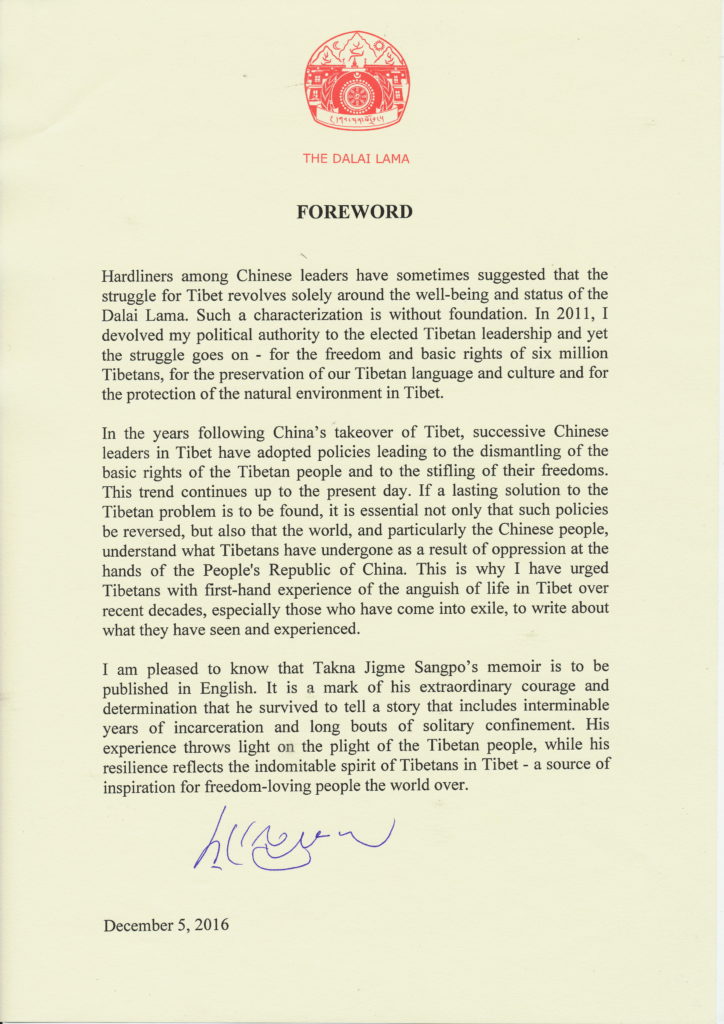
Ganden Tashi’s piece, translated from Tibetan by Matthew Akester, was originally written for Takna Jigme Sangpo’s 2017 memoir in English, ‘Swirling Red Dust: The Story of Tibet’s longest serving political prisoner’ but has not been available online before. He writes about Takna Jigme Sangpo using a shortened form of his name, Jigsang. The memoir was published by International Campaign for Tibet Europe and Bhuchung D Sonam’s Blackneck Books, an imprint of TibetWrites. For a free copy, contact Bhuchung D Sonam at: support@tibetwrites.in
Takna Jigme Sangpo’s funeral will take place on the morning of October 22, 2020, in Switzerland.
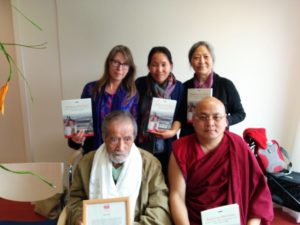
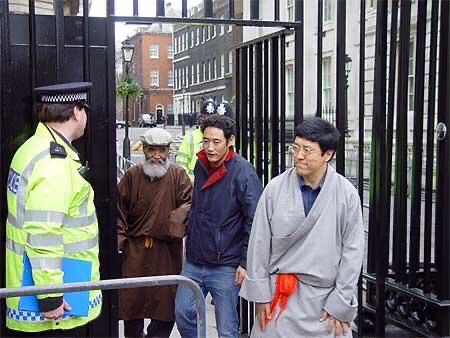
“My Cellmate Jigsang-la”
By Ganden Tashi
Drapchi prison unit 1 dormitory no.9, January 1989. One bitterly cold winter morning in the middle of December 1988, I was put into an army truck with 19 others at the Lhasa Detention Centre, and transferred to Drapchi prison for “reform through labour”. At that time, Drapchi was divided into four units (rukhag), and we were divided up between them.
We had all been given prison sentences as ‘counter-revolutionaries’ for involvement in the protest on March 5, 1988 at the Great Prayer Festival in Lhasa, and most of us were Ganden Monastery monks.
Along with myself, Ganden monk Tenpa Wangdrak (14 year sentence), Chungdak, the head of the monastery’s Democratic Management Committee (10 year sentence), Tibet University student Lobsang Tenzin (two-year suspended death sentence) and Ganden Lama Yulo Dawa Tsering Rinpoché (10 year sentence) were taken to unit no.1. We were each given a blue prison uniform and a quilt, and made to hold them as we were photographed.
It was about 10am by the time we arrived there. The prisoners had gone out to work, and apart from a couple who were too old or ill to work, there was no one in the courtyard. One Chinese and one Tibetan prison guard then took me into dormitory no.9. There were 12 beds, six on either side of the room, each with a lower and upper bunk. On the lower bunk of the bed next to the window, an elderly prisoner sat cross-legged with a quilt wrapped around his knees. The old man seemed to realise that I was a new prisoner, but seemed not to know that I was a political prisoner rather than an ordinary criminal, as he paid no attention to me at all. In front of him, the Tibetan guard told me “While you are in this dormitory, you are not allowed to have any contact with him. He is an old man who cannot go for work or exercise, and his mind is also infirm. He makes trouble over nothing.”
Around 7 o’clock that evening, the rest of the prisoners returned from work, and ate the evening meal in the dormitory. About an hour later, the bell rang for them to return to their beds. A guard came around to inspect the prisoners, and introduced me to the dormitory head (tsutrang) Sonam Tsering. “He will explain the dormitory regulations to you. You are not allowed to tell the other prisoners about your crime. Sonam Tsering will explain one by one about getting up time, daily hygiene and the dormitory cleaning roster,” he said, before locking the door and walking away.
There were 10 prisoners altogether in the dormitory, leaving two empty beds. As soon as the guard left, they started to talk. They spoke about that day’s work, and the work planned for tomorrow, and nothing else. The old man sat silently as before, with his knees wrapped in the quilt so grimy that one could not tell what colour it used to be, paying no heed whatsoever to the loud talk around him, hardly even moving.
The faces of those loud-spoken prisoners were ashen, and as they talked about their work, it showed that the weight of their workload was sending them out of their minds, and the labour taking a great physical toll. More of them were talking loudly than listening. One of them, a stout man with dark scabs covering his face, and pictures of swords, dragons, women and animals tattooed on his forearms and chest, came over to me, and asked: “Where are you from?”
“Medro Gyama,” I replied.
“What’s your sentence?” he asked. “Three years,” I replied.
“Haha,” he laughed. “From today you will have to eat 15,000 of the Communist Party’s tingmo (steamed bun), sweat two bucketsful, shed nine layers of skin, and then your red ass can be straight out of that black steel door. I have eaten 150,000 of the Party’s tingmo, sweat ten bucketsful and shed 80 layers of skin, but it is still 12 years until my ass gets through the black steel door.”
What he said did not sink in that night, but within a few days I came to understand. I learned who he actually was. He was from Driru Dzong in Nagchu, his name was Bumga, the prisoners usually called him Hor Bumga (Hor being the traditional name for eastern Nagchu), and he was the nephew of Gagya Dramnak, the famous bandit chief from that area in the old days. He would fearlessly and unabashedly tell people whatever he thought, was amiable and easy to get along with, and showed no sign of being unhappy to be in prison. Within a week we had become friends.
The way of behaving and talking of the prisoners in that dormitory was quite different from the detention centre I had come from. Their way of doing things was a little frightening, and their language was full of expressions abhorred in normal society. Sex and women was usually their favourite topic, about which they spoke frankly, and attracted the most listeners.
My bed was the upper bunk opposite the old man’s bed, and Sonam Tsering was in the lower bunk. With my head on the pillow, I looked straight down at him, and could see his every movement. Before the night bell went, the old man pulled himself up and went to pee in the urinal bucket behind the door. Sonam Tsering told him: “Po Mu-da, if you dribble on the floor around the bucket, the dormitory cleaning shift will get annoyed. If you can’t see properly, it’s better not to use the can and just pee straight into the bucket.” (It was normal practice to pee into a ladle and then take the lid off the bucket and pour it in, because to leave the lid off for longer would fill the room with the stench of the accumulated urine.) “Otherwise the ones who empty the bucket in the morning and the cleaning shift people will complain.”
The old man nodded, saying: “I didn’t mean to dribble on the floor. I can’t see well in this corner,” acting as though it couldn’t be helped.
“If you don’t use the ladle and pee straight into the bucket it will be fine,” Sonam Tsering told him. On that first day, the old man and I did not exchange a word.
Next morning, as soon as the door was opened, the prisoners went out into the yard to wash their hands and faces, and I went to do the same. The old man also came out to wash. He removed his grime-coated woollen balaclava and spectacles, put them on the windowsill and washed his face. I was standing nearby, and the impression I had from studying his movements has stayed with me until now. The lenses of his spectacles were cracked and broken. Those glasses, worn for so many years, were coated in soot, and the frames were also broken into fragments, but he had stuck them together with white tape and wire so that they just about stayed on his head. On top of that, another layer of black thread, coated in a further layer of soot and grime held them in place. Without being tied on, those broken spectacle frames could certainly not be worn in the normal way. The shoes that he had worn for years, with no regard for the change of seasons, had no laces. The clothes he was wearing were equally filthy, and it occurred to me that the stains of dropped food, saliva and mucus on his shoes were adding to the accumulated stains of many years.
Looking at the old man that morning, he appeared to be blind, and the way he groped around for nearby objects was pitiful. The patched and stained prison uniform, cotton-quilted pants and thick dark blue jacket seemed not to warm this deeply scarred old man, but to further impede his movement. While the prisoners around him were doing stretching exercises or washing their hands and faces, he hawked up phlegm with all his might, and it would not be too much to say that all the foulest gunk from his insides came out in one go that morning.
At that point, I could not know that he was one of the leaders of the independence struggle and a shining example to my generation. Rather, I thought: How sad it was for an old man who could not even walk but supported himself against the wall to move, reaching out with his arms as he could not see, to be in prison. What crime could he have committed? How many years had he been there? How many more would he have to remain? For the Communist Party to make this old man suffer the punishments of prison seemed extraordinary. I thought that he must have committed a serious crime, and wondered whether the force of his bad karma kept him alive to suffer so, but anyway felt a deep and unfeigned empathy for him.
These impressions relate to my first night and morning sharing a dormitory cell with Jigsang-la – just one day of the many years and decades of prison life he had endured, but perhaps the first opportunity there had been for a (post-1987) political prisoner to see his situation, incarcerated among genuine criminals, from inside the same cell.
After a few days, I got to know the other prisoners and gradually those in the rest of the unit. Hor Bumga and another prisoner in our dormitory from Markham called Drukta Tsering both acquainted me, as a new prisoner, with goings on in the dormitory, the situation in the prison, the crimes of the older prisoners and the details of their own stories.
One very cold winter afternoon, I got the chance to chat with Hor Bumga. He asked if I knew what kind of person our Po Mu-da really was. I replied that as a new prisoner I would not know, but the other morning, watching how he behaves and his blindness, I felt so sorry for him.
“The reason why the prisoners call him Po Mu-da”, he explained, “is because when he feels happy, he keeps singing a Chinese song that goes “Ah-a-Mu-Da”. His real name is Jigme Sangpo, and he is in prison for demonstrating against the government for independence. He must have been inside for about 20 years so far. Even in prison, he has protested for Tibet’s independence many times. We cannot even guess how much he has been beaten and tortured. That is precisely why he is now in our dormitory.”
“After the September 1987 pro-independence demonstration in Lhasa”, he went on, “the prisoners first got to know about it through the newspaper. A few days after, they held meetings in each unit to encourage people to denounce “the small number of separatists.” Quite a lot of the prisoners did, but they were mostly Chinese. One Sunday that October, the guards had gone for lunch and the prisoners were having their Sunday rest in the courtyard, when suddenly, from the first floor balcony of the building in front of the courtyard, came the sound of shouted slogans: “I salute the patriotic heroes and heroines who demonstrated for independence in Lhasa! Long live Tibet’s independence! Long live the Dalai Lama!”, and so forth. The prisoners in the courtyard had never heard pro-independence slogans shouted in prison before, and wondering in amazement what was going on, they went to look, and saw that it was Po Mu-da, the old man whom they normally ignored. As there were no guards in the unit at the time, or other officials to stop him, he kept on shouting for quite some time. But Sonam Tsering, who is now the vigilante prisoner in our dormitory, rushed up to the balcony and, using both force and persuasion to shut him up, grabbed him by the arm and dragged him down to his cell. Sonam Tsering went straight to report to the guards that there had been a political incident in the unit, and the guards came in with soldiers, put Po Mu-da in handcuffs, frogmarched him out of the unit, and threw him into the two-metre-square solitary confinement cell. No one knows what he went through in there, but at the end of the year his sentence was extended for five years for having “shouted reactionary slogans.” “Rewarding good deeds and punishing crimes” is one of the cardinal principles of this prison, so on the same day that Po Mu-da’s sentence was extended, Sonam Tsering was listed as having acted uprightly to stop the shouting of reactionary slogans, and at the end of the year, his sentence was reduced by three years. Now Sonam Tsering has been appointed by the authorities to sleep opposite Po Mu-da and watch his every move.”
“So”, he concluded, “Po Mu-da is not a weak person. He is very principled and courageous, a real fighter who is willing to die for Tibet’s independence. If you talk to him in our dormitory when Sonam Tsering is around, especially about anything political, be very careful, as Sonam Tsering could even make a false allegation in order to prove another “good deed”.”
Hor Bumga related that Sonam Tsering had worked for the Shigatsé prefecture procuratorial office. When he heard that his wife was having an affair with another man, he shot the man dead and shot his wife, leaving her crippled for life. He had a life sentence, and had been inside for 10 years already.
I was astounded to hear Hor Bumga’s honest counsel and brief story of the old man, and wished to talk with Pa Jigsang-la, but of course could not get the opportunity just like that. That evening, after the guards had inspected the prisoners and locked the door, I climbed up on to my bunk and studied the old man’s bearing at length. That evening, thinking that I was sleeping in the same room as this old man who had fearlessly stood up for Tibet’s independence, I had some inexpressible feelings.
The other morning, when I had noticed him at the washing place and felt sorry for him, I had not even imagined that he could be this kind of person. This scarred, goatee-bearded old man, in all the years of hardship he had been through up to now, for the sake of his people and country, how much abuse had been inflicted on him? It was amazing that he was still alive! I longed to hear it from him more than a thirsty person longs for water. But then, I thought, judging from his condition and manner, there was no doubt that he had been subjected to endless torture over many years. What could he tell of his struggle and his pain? Did he have family? With the impact of such mistreatment on his mental state, would he be able to explain clearly what he had suffered? Had he forgotten? That was what worried me the most that night.
The next day, I planned to take any opportunity I could find to speak with him. Generally, when prisoners went out to work during the day there were opportunities to talk during the breaks, but Jigsang-la stayed back while we went out to work, and as all the prisoners returned together, it was not at all easy. During that time, I had a chat with Drukta Tsering, and asked him about Jigsang-la.
Drukta was from the Markham area of Kham. He had quarrelled over a sheep with his cousin, pulled a knife, and ended up killing him. He was given the death sentence, suspended for two years. Drukta was a fair person, and bore absolutely no ill will towards his fellow prisoners. In the dormitory he helped Jigsang where he could. His family background did not dispose him well to the Communist Party, and he was a true Tibetan and a properly behaved prisoner.
I asked him whether what Hor Bumga had told me about Jigsang was true.
“It is true”, he told me, “and there are stories about Po Mu-da’s agitation for independence that people could scarcely imagine. On the outside, he looks old and a bit mentally unstable, but his spirit is still strong. His commitment to Tibetan independence, to his people and country is no madness, nor has it grown old. If you get the chance, ask him to tell you about who he is, and I’m sure he will be happy, and will tell you his story. But be careful of Sonam Tsering.”
Hearing this, I determined to find a time to talk with the old man, but for days there was no opportunity. As soon as we got back to the dormitory after work, Sonam Tsering was there too, and if he saw me do it, he would surely make trouble for me. But then there was Sunday. The prisoners had a day off work and stayed in the unit, playing dice, carrom or cards, or doing chores like washing clothes and cutting their hair. After the midday meal, Sonam Tsering and some of his friends amused themselves playing xiangqi (chess) in the courtyard. I went to look in the dormitory, and there he was, sitting cross-legged on his bed as usual.
I went straight to Drukta Tsering and told him “I am going to talk to the old man. If Sonam Tsering comes into the dormitory, please come to the window and give me a signal.”
“Sonam Tsering is playing chess in the courtyard and will not be coming in”, Drukta Tsering told me. “You should first introduce yourself as a political prisoner, otherwise the old prisoners don’t open up. I will keep watch for Sonam Tsering outside the window.”
Then I went straight back in. A few days earlier, I had noticed that a prisoner from Chamdo called Tashi Tsering had a small blue handkerchief, and thought it would be perfect for the old man to wipe his eyes. I asked him to swap it for my large face towel, and he agreed. I took that soft blue handkerchief, went before him and respectfully greeted him.
“Sonam Tsering is occupied with his game, and Drukta Tsering is keeping watch outside the window”, I began. “Hor Bumga and Drukta Tsering told me briefly that you are a political prisoner. I really wanted to talk with you, but Sonam Tsering is always around, so I have just been watching you sleep at night.”
I went on to say that I was a Ganden monk, briefly told him why I had been imprisoned, and offered him the handkerchief.
As soon as he heard me addressing him respectfully, he looked intently at my face for some time from beneath his worn out glasses. Clearly delighted to meet a political prisoner from the young generation, he grasped my hand and said with great affection and sympathy: “You are a political prisoner! A few days ago, one of the cooks confided to me that a new group of political prisoners had been brought in. I heard that political prisoners have been brought in to unit 4, unit 2, and unit 3, the women’s unit. Tell me where they are from, and how many there are.”
I explained that they were mostly Ganden monks, some from Sera and Drepung, and some laypeople from the Lhasa area. He took both my hands and told me “When I heard the news about you patriots protesting against Chinese occupation on September 27, October 1, March 5 and so on, and your historic struggle for Tibet’s independence, this blind old man of 62 was lit up with pride and joy. It gave me such happiness – thank you!”
“Out of respect for your courageous actions, I shouted out inside the unit for independence. This was to show my support for your struggle”, he added.
He asked how much they had tortured us in the detention centre, how many had died, and so on.
Hearing this forthright talk, and deep concern for us political prisoners, I realised that although this old man had been beaten into infirmity and sent blind by the Communist Party, he showed no sign of being mentally ill or unstable, as people had said, and that what Drukta had told me earlier was quite true.
I asked him how long he had been in prison, and how much longer he had to go. With a confident air, he shook his head, and said “That is a long story…I spent 15 full years in prison between 1965 and 1987. I experienced all the horrors of the Cultural Revolution in prison. In 1983, for demonstrating again in Lhasa for Tibetan independence, the Communist Party sentenced me to 15 more years and brought me back to Drapchi. In 1987 when I shouted for independence, they called me names like “stubborn old brain”, “resisting reform” and “counter-revolutionary”, and increased my sentence by five years. Anyway, not counting the 15 years from 1965, I have been in Drapchi this time for six years so far. Fourteen more to go.”
Hearing this, I was astounded, and momentarily speechless. Had I not known his real situation, I might have overlooked him just as the guards had told me to. But looking intently into his watering, rheum-filled eyes behind the broken spectacle frames, and his scarred and filthy-bearded face, I bore witness to his extraordinary courage. He had been in prison for 21 years, one more year than I had been alive at that point.
He seemed to understand my speechless sympathy, and told me: “There is no need for you to be troubled about what I have been through. Whatever heavy punishment they have dealt out to me, however much I have suffered, my own little struggle has forced the Communist Party to remember its crimes of invading Tibet, depriving it of its independence, making the Dalai Lama flee to India, slaughtering thousands of Tibetans, visiting the worst destruction in history on Tibetan religion and culture, and all the rest of it. It is a signal to Tibetans not to bow their heads before Chinese repression, and makes the Chinese Communists’ crimes in Tibet clear. That is the point of my struggle, for the Tibetan people both dead and living, and with that I am content. The hardship I have been through never depresses me. Even if I have to die in prison, I am prepared for it and have not the slightest regret.”
Hearing this, I thought that no one could guess the conviction in Tibetan freedom dwelling in the mind of this poor and nearly blind old man. I wondered whether people outside, and the Dalai Lama and others in India knew of what he had done and his situation. If the Chinese had kept him in prison for so many years, and still needed to punish him so heavily in old age, it made me think that his undeterred commitment to the struggle and pure devotion to his people had become something for which the Communist Party had to exercise constant vigilance.
Had I not been put in the same dormitory, and got to talk to him today, I might well have believed the guards’ taunts that he was a mentally unbalanced, degenerate old fool. Instead, my only thought was that by coming to this famous Drapchi prison, the great personality I had got to meet and talk to was precisely this “blind old fool.”
Even more than I wanted to know about his story, he was burning to know about the independence protests by the young generation in Lhasa on September 27, 1987, October 1, 1987 and March 5, 1988, and asked me one question after another, as if we were both essential sources of information in an exchange between the old and new generations. Among his questions, those he asked most intently were: “When the monks led the protests, what kind of support and backing did they get from the general public?”, and “What news have you heard of the Dalai Lama, the UN etc. drawing attention to the situation in Tibet?”, “How badly did they beat and torture you during detention and interrogation?”, “How many were sentenced to prison? How many are still in the detention centre? How many died?”
Concerning beatings and sentencing, there was not enough time to answer in full, but I answered in brief. After hearing this, he said delightedly: “This freedom struggle of yours is not for your own material needs and happiness, it is for the Tibetan nation and people, and especially when the religion and culture built up by our ancestors over thousands of years is in danger of disappearing from this world, the struggle for our people’s freedom might entail great suffering and even loss of life. However, there is glory and dignity in it, and in terms of the real history of Tibet you are not on the way to defeat, but your taking on all this hardship can never be forgotten in our history. Today, Tibet has outwardly been occupied by the Chinese Communists, but their soldiers have not been able to extinguish the people’s inner thoughts and determination. Because of this, there is no reason for the courage of our struggle to be diminished. Our victory depends on our struggle, and our struggle depends on our courage.”
For me, this part of his advice, gained while deprived of all freedom behind the high walls of that inhumane prison, was the ultimate “inner teaching on the freedom struggle”. It was something that stayed with me not just in prison, but rings in my head even now, living in exile.
He went on: “Since you are a new prisoner, your sentence is not long, and you are still young, you should keep your wits about you in prison. However severe the beatings you have received, they are exactly in keeping with your struggle and a sign that you have exercised political power. If you make life easier for yourself by going along with the Chinese, their deceptions will influence your thinking, if you are not careful. The day you accept their rewards and praise, it is a clear sign that your commitment to your struggle and principles has waned, that you have accepted defeat,” he pointed out, tapping my shoulder twice with his hand. With this, he seemed to be passing on to me the benefit of his experience and heartfelt advice as a lifelong prisoner.
Anyway, that was part of our first conversation. In March of that year, the dormitories of Unit 1 prisoners were changed around, those with sentences under five years were all put together, and since I had a three-year sentence, I was put with them, and my time as Jigsang’s cellmate was over.
There is more to say of the advice he gave and the trials he had suffered, but as they appear in this book, I will not repeat them here. I take this opportunity to add the record of our first meeting to the present book about his life to show my supreme respect, the strength of my bond with him as a fellow in the struggle, and to mark my deep commiseration with those like him who have done great things and even given their lives for the cause of regaining Tibet’s independence, the heroes and heroines of our country who live on in my heart.
He made an invaluable impression on the hundreds of political prisoners at Drapchi since 1989 as an outstanding example, a noble being who more than anyone gave vitality to the freedom struggle for the young generation, whose accomplishment remains unfading in the hearts of the Tibetan people, and especially his fellows in the struggle, both the dead and those still living.
May Tibet prevail!
Ganden Tashi
February 7, 2017
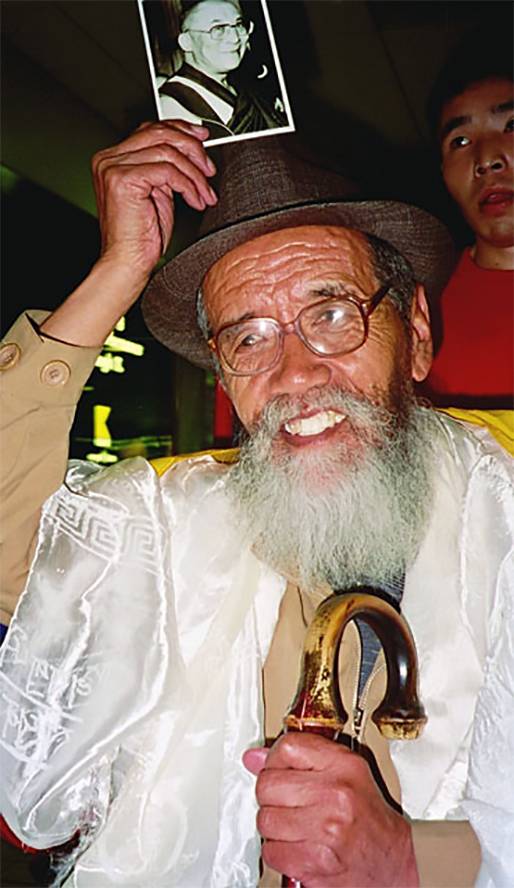
“The Passing of the ‘Courageous Noble One’”
By Kate Saunders
On October 17, Takna Jigme Sangpo, Tibet’s longest serving political prisoner, passed away early in the morning in the residential care home in Switzerland where he had lived in exile for his latter years. He was 92. Former schoolteacher Jigme Sangpo, known to Tibetans as the ‘courageous noble one’ or simply Pala, or ‘grandfather’, had endured nearly 40 years in prisons and labour camps in Tibet, surviving torture and near-starvation, witnessing executions and the political upheavals of four decades from behind bars. He was finally released in 2002 at the age of 74.
Jigme Sangpo was known as one of the most intransigent, determined prisoners of all – someone who continued to defend core Tibetan values, principles, belief in rangzen, in humanity, and in the Dalai Lama – even after the worst punishments had been inflicted upon him. Ganden Tashi’s moving testimony of sharing a cell with ‘the old man’ conveys just how much this meant to a younger generation of Tibetans, saying that his advice, “gained while deprived of all freedom behind the high walls of that inhumane prison, was the ultimate ‘inner teaching on the freedom struggle’.”
This was a man who, even when on the brink of release, refused to sign a statement saying that he would never return to Tibet. In the end, he never did go home, and after a period in India, lived his last years in Rikon Monastery, and then at a retirement home in a small town not far from Zurich, in a gentle landscape of green hills and streams.
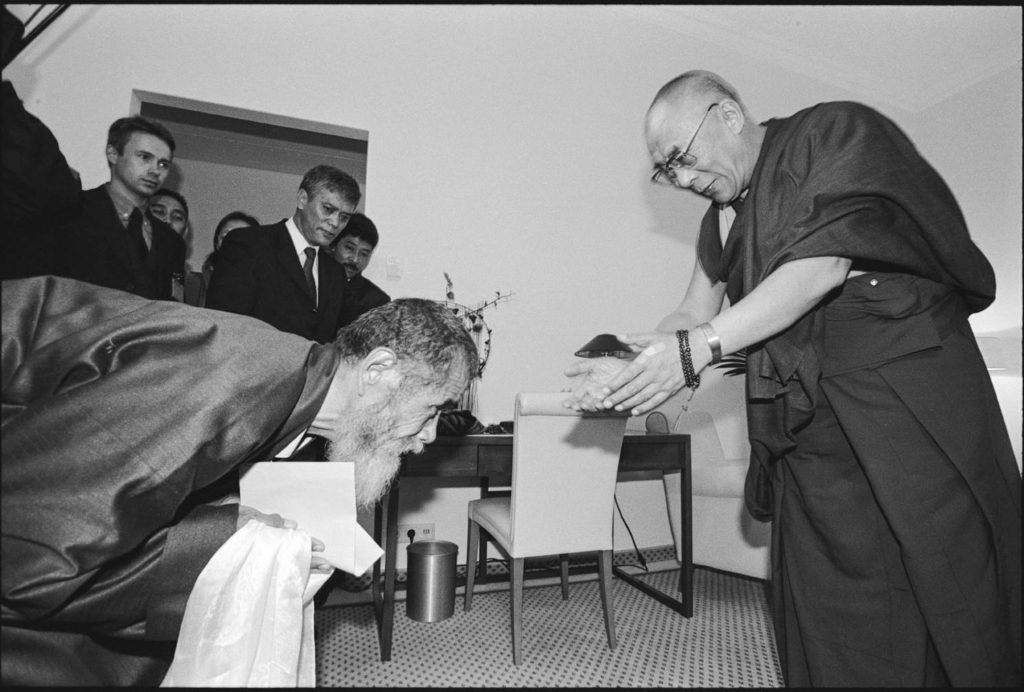
He lived to defy the threat of a prison guard who told Drapchi inmates: “If you’re like this old fox (Jigme Sangpo) and don’t accept reform and admit guilt, you will never get out of here. The only way Jigme Sangpo will leave Drapchi is in a box.”
When he arrived in exile, first to the U.S, Jigme Sangpo travelled the world, speaking about his experience and the importance of Tibet’s freedom struggle “at a time when the religion and culture built up by our ancestors over thousands of years is in danger of disappearing from this world.”
Jigme Sangpo gave a generation of young Tibetans a deeper understanding of their history, of what their elders lived through. Despite the depth and tragedy of this lived experience he did so with a radiant warmth, an often joyous smile. In a moving and poignant film that gives an insight into his later years in exile, Swiss-Tibetan Lobsang Tashi Sotrug depicts him saying prayers for the life of a small bug in his room, drawing a diagram of the layout of his prison cell and mischievously answering questions about love affairs in old Tibet.
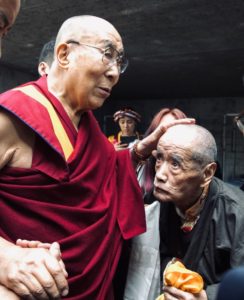
This frail old man with a Father Christmas white beard, shown in the film queuing at a Swiss post office in his cardigan and with a walking stick (in his last few years, he was no longer so mobile), had first been blessed by the Dalai Lama when the Tibetan religious leader was a young teenager. His last audience with His Holiness was in 2018. The Dalai Lama wrote in the foreword to Sangpo’s memoirs: “It is a mark of his extraordinary courage and determination that he survived to tell a story that includes interminable years of incarceration and long bouts of solitary confinement.”
Jigme Sangpo was a unique witness to the convulsions and bloodshed of Tibet’s contemporary history, and his death follows the passing of two other prominent Tibetan political prisoners of the same generation, Ama Adhe on August 3 (2020) and Palden Gyatso in November 2018.
Jigme Sangpo’s family name, Takna, comes from the name of a rock shaped like a tiger’s nose on a hill in front of his family estate in the Chushur area of Lhasa (the area is now the site of the main prison, Qushui in Chinese). Jigme Sangpo’s family had been devoted lay officials to the national government of Tibet combining monastic and secular authority, the Ganden Phodrang, and they were deeply religious. As the youngest child in a large family, Jigme Sangpo’s mother took him to teachings of the great religious lamas in Tibet at that time, and to the Potala Palace to receive blessings from a young Dalai Lama.
Jigme Sangpo said that this blessing when young gave him “a feeling of deep happiness, a wish to stay close to him”, and he remained devoted throughout his imprisonment, saying that he thought of His Holiness every day, and later in life.
His memoirs in Tibetan and English recall the atmosphere of that time, in the days before the Dalai Lama was officially enthroned as temporal as well as religious leader of Tibet in November 1950. There was the sense of a gathering storm, an awareness of the words of the 13th Dalai Lama in 1932 about the rise of Communism: “If you are not able to defend yourselves now, the institutions of the Dalai Lama, venerable incarnates and those who protect the Teachings shall be wiped out completely […] all souls shall be immersed in suffering.”
In 1952 Jigme Sangpo became a teacher at the new school, Seshim, in Lhasa, after Tsatrul Rinpoche taught him Tibetan grammar and advised that in order to properly learn something, one should teach it. It was at the time that the Chinese government was trying to give a good impression to people in Lhasa, and teachers’ salaries were all paid for by the government, with children covering some expenses by collecting medicinal herbs.
Later in life, Jigme Sangpo said that he remembered this as a positive example of Tibetans and Chinese working together. He was unusual among those from his background in acknowledging the need for urgent reform of the old society. In his memoir, which sadly left many stories untold, he strove for balance, indicating his early hopes for ‘Democratic Reform’: it should have “set an orientation for the Tibetan nation and people to shed backwardness in favour of scientific, economic and cultural progress, like a road road out of the past towards development and freedom.” He also wrote: “For the Tibetans, a meek and naive people living quietly in this world, Democratic Reform was the moment when the unique excellence of Tibetan Buddhism, personified by His Holiness the Dalai Lama, began to spread further afield.” But then, when he reflects how the normal routine at the great three monasteries of Sera, Drepung, Ganden and thousands of other monasteries ground to a halt, he realised the “terrible eventuality”… “as if the Buddhist religion had been extinguished in the heartland of Tibet and the city of Lhasa”. The suffering and misery were something “that the mind can scarcely encompass”.
Everything changed in Tibet on March 10, 1959. Sangpo remembered his mother’s terror at the sight of Chakpori surrounded in clouds of dust and the sky being filled with swirling red dust as the Potala Palace was shelled. Soldiers stormed their courtyard and Jigme Sangpo and others were escorted past PLA trenches and shattered buildings. At the main gate of the Norbulingka, only a few small, empty tents of Tibetan resistance fighters remained, with religious texts and musk pods (used to treat flesh wounds) hanging from the poles. Towards the Kashag meeting hall, they saw hundreds of dead bodies, many with no heads, draped in white blessing scarves. Together with a large group of Tibetans, Jigme Sangpo was held under guard overnight in an almost demolished building. The next morning, when they were allowed to leave, he saw corpses everywhere, with bodies of Khampas and Amdowas in their sheepskin robes. Later, he recalled the silence; not even a bird was singing.
It was only later, amidst the feelings of emptiness and grief in the aftermath of the uprising, that he and other Tibetans learnt that the Dalai Lama had reached safety in exile. Jigme Sangpo returned to work as a schoolteacher in a devastated Lhasa, as the PLA and Party began laying the groundwork for intensive political campaigns to come. ‘Democratic Reform’ began and Jigme Sangpo was drafted into a re-education work team. Unfortunately for the authorities, none of the monks in the monastery where Jigme Sangpo was based would make accusations against each other, so they were given instructions not to be “so peaceful” and to “speak out about what you have suffered in the past in order to heal your mental wounds.”
Jigme Sangpo was compelled to participate in a campaign allied ‘Eat together, live together, work together [with the masses]’ that presaged the deeper more systemic approach adopted by the CCP today in Tibet, involving thousands of Party cadres embedded at ‘grass roots’ village level, required to monitor every aspect of individuals’ lives, obliterate the traumatic memories of elders like Jigme Sangpo and accelerate the rewiring of Tibetan thinking and beliefs to create compliant citizens of the Party state.
The great famine of 1959-62 was a direct result of Mao’s ‘Great Leap Forward’ and is still a taboo subject in China. As it coincided with ‘Democratic Reform’ in Tibet, when a large proportion of the adult male population was incarcerated, mass deaths from starvation in Tibet occurred mainly in prisons and labour camps. The hardships of the time are reflected in the prayer of an Amdo elder upon meeting the 10th Panchen Lama, recalled by Jigme Sangpo: “Do not let the Buddhadharma become empty/Do not let the land of snows be lost/Do not let the people starve.”
Jigme Sangpo’s first arrest followed a political campaign in 1964 to criticise the 10th Panchen Lama, who in 1962 had written his devastating and comprehensive critique of the CCP, the ‘70,000 character petition’. When they told him and others that they had to expose and criticise his crimes, Jigsang said he would do neither, and objected to his treatment by the government. He was given the title of ‘Little Panchen’, high praise for a Tibetan, but a clear and ominous warning of a fate to come.
In August 1965, they came for him, in the middle of the day, he remembered, rather than at night, when so many of his colleagues had been dragged from their beds. In his book, he recalls his feelings when first being taken to Sangyip prison, “isolated in a forlorn, dust-blown pocket of the mountains; just looking at it from the outside is depressing and chilling.” He wrote: “At that time, my mind was preoccupied with my own innocence, believing that I had committed no crime. I was young then, and none of us knew the scale and scope of what we would live through, how the Party defined ‘innocence’ or ‘guilt’. Later, my mind began to admit fear, too.”
Forced to do hard labour at a time of famine during this period, Jigme Sangpo had marks of torture from his imprisonment in the 1960s on his body for the rest of his life. He recalls one shocking detail – that some Tibetan prison guards committed suicide because of the brutality of torture they were compelled to inflict. Prisoners had to do hard physical work such as carrying stones on their back for 12 hours a day. Although they were fed hardly anything, he heard that some people outside were suffering so much from hunger that they volunteered to go to prison in order to prevent complete starvation.
Jigme Sangpo’s next term in prison came in 1970, when he was sentenced to ten years for ‘counterrevolutionary collaboration”. He explained that the reason for this was a photograph. Together with three friends, he had a photograph taken in Tibetan chubas. When some of his students graduated, they asked for copies as a souvenir, and later those students were arrested as suspected members of a secret resistance group known as the Tiger Cubs.
At that time, the political climate in prison reflected the excesses and brutality of the Cultural Revolution outside. He remembered: “The Cultural Revolution was a nightmare for everybody. No one escaped unscathed; there were so many internal struggles. Prison life mirrored the conflicts and suffering of society outside. We could always tell when there was a particular crackdown, for instance, as we would experience it in a tightened regime inside prison. Similarly, we could tell when there was a particular power struggle in the Communist Party government, even though we might not know who was against who.”
Once, one of his close friends in prison, Trinle Gyatso, was beaten and strung up from a beam. Jigme Sangpo could never forget his screams when he was being tortured. Later, he was forced to watch them execute him. Prisoners being held elsewhere had to walk to Drapchi prison in chains to watch executions; it was a journey they dreaded. Together with Palden Gyatso, Jigme Sangpo witnessed the execution of resistance heroine Kundeling Kunsang, who was imprisoned in 1959 as leader of the womens’ protest march in Lhasa on March 11.
When Ganden Tashi met Jigme Sangpo in Drapchi in the late 1980s, he was almost blind, wearing battered, broken spectacles. His virtual blindness set in as early as 1973, when he developed cataracts, later treated in Switzerland. (Jigme Sangpo marvelled at the time that this was at a cost of thousands of Euros – “proof that there is respect for human rights in Western countries, for which I again express my highest thanks”.) In prison, the damage to his sight was to such an extent that he would have to stick his finger in his cup to ascertain the amount of tea, and he needed to tie a red cloth to the door of the cell to find his way in. Meanwhile, he had to continue to labour with the rest, carrying mud and rocks.
When this sentence came to an end in 1980, Jigme Sangpo was assigned to a work brigade at a brick factory, a common fate for released prisoners at that time. Remarkably, given his previous experiences in prison, Jigme Sangpo decided to engage in a political action in solidarity with an admired monk friend who had made a leaflet stating that Tibet was historically independent. Jigme Sangpo said later that he also wanted to demonstrate that Tibetan resistance was still alive, despite the crackdown. So he went to the Barkhor in Lhasa and pasted up leaflets calling for independence.
Inevitably, this led to his arrest, which he had expected, and he was sentenced on November 24, 1983, to 15 years imprisonment for “inciting counter-revolutionary propaganda”. He was sent to Drapchi Prison in Lhasa. “The very sight of Drapchi,” he said, “With its east-facing black iron gates, is sinister and terrifying. The grasping noise of that gate as it opens makes the heart tremble. You pass through the boundary wall five metres tall capped with double barbed wire fencing, and inside, the modern quarters have surveillance cameras and voice recorders installed. Thinking about this condition of enforced immobility induces despair.”
Jigme Sangpo was not to emerge from prison for nearly 20 years, by which time he was in his seventies. Just as it was an act of resistance that had led to his imprisonment, he was determined to continue his resistance in prison, however he could. Swiss-Tibetan Migmar Dhakyel said: “In prison they received five Yuan per month. He told me he wouldn’t touch the ‘Chinese money’ and he always wore gloves to receive it. Then he would hand the money to a fellow prisoner and ask him to get him a toothbrush and toothpaste. The rest of the money he would burn in the kitchen fire because he said that ‘Chinese money’ is part of their colonisation of Tibet.”
On one occasion, he was suspected of saying prayers under his breath. He yelled at the guards that Chinese Communists should be driven out of Tibet, and that Tibetans had no human rights. He was beaten up so badly that he decided he would prefer to die rather than live, and went on hunger strike for ten days. After ten days, “I was still not dead”, as he put it, and he was force-fed with tsampa paste; he remembered the hands of the two nurses shaking as they administered the food through a clumsily inserted tube.
Jigme Sangpo never forgot those in prison who helped him, and on this occasion it was a Khampa guard they called ‘Zongtong’, because he had a nose as big as American President George Bush [senior]. This guard brought him butter, tsampa, meat and cheese, although he warned it was dangerous to eat too much immediately after a hunger strike, and Jigme Sangpo regained his strength.
On October 5, 1987, in support of the mass demonstrations nearby in Lhasa, Jigme Sangpo staged his own protest in prison, by shouting slogans when the prisoners had gathered for breakfast. His sentence was extended by five years. On December 6, 1991, he shouted pro-independence slogans in English, Tibetan, and Chinese as the Swiss ambassador visited the prison, and his prison sentence was extended by another eight years. The involvement of the Swiss government in pressing for his release was one of the reasons why he settled in Zurich.
Following his involvement in protests at Drapchi prison on 1 and 4 May 1998, Jigme Sangpo was held in solitary confinement and, together with almost all other political prisoners in Drapchi at the time, suffered from brutal beatings and interrogation. An elderly prisoner at the time, held in a cellblock with other older, respected prisoners such as Palden Gyatso and Yulo Dawa Tsering, he continued to uphold the Dalai Lama’s principles and urged other political prisoners not to take part in any violent action during the protest. “He feared that we would do so because we were so angry,” a former prisoner testified.
In the latter part of his imprisonment, Jigme Sangpo was transferred to one of the two-person cells that were a feature of Area No.9, a cell-block at Drapchi to hold prisoners undergoing stricter punishment than the normal regime and new male arrivals.[1] Throughout his imprisonment there, which continued almost until his release in 2002 on medical parole, a Tibetan criminal prisoner was placed in the cell to act as a monitor.
Conditions in the block, known as “Tsonkhul” (Detention Area) Nine, were the harshest in the prison. Takna Jigme Sangpo says that prisoners were transferred to the block for punishment if they do not give satisfactory responses during “political investigation” sessions. “They hold them there for between six months and one year to break their spirit,” he said.
On September 11, 2001, Takna Jigme Sangpo still had nine years to serve at Drapchi prison in Lhasa. Although he and other prisoners were not usually allowed to watch television, except for some important state news broadcasts, they were suddenly summoned to the TV room by prison officials. Knowing that there must be some reason, and that it would not be a good one, Jigme Sangpo told them that he had a headache. But they forced him to go anyway, physically dragging him along the floor.
Even in the TV room, Jigme Sangpo lay down instead of watching, but they told him to get up, and made other prisoners hold him up in front of the screen, saying, “If the American imperialists suffer a loss, will you cry for them?” They were reporting on the 9/11 terrorist attack on the U.S. “Now, look at what has happened to the American imperialists, the saviours of Tibetan separatists!” they taunted the Tibetan prisoners, who knew that America has been one of the strongest supporters of Tibet worldwide. Jigme Sangpo decided to make a statement to show that he resisted the prison guards’ gloating over so many tragic deaths. Once again, he went on hunger strike, and this time he became very ill. He was transferred to a military hospital at Sera, where a rubber tube was inserted into his nose and he was fed gruel. Despite the agonizing pain, he appreciated the actions of the doctors, and said later, “The most important thing to me is that they cared. It is through lack of human care and warmth that people die.”
It was in the aftermath of 9/11 that he was released. Ignoring Russian President Putin’s counsel to distance China themselves from the U.S., the then Chinese leader Jiang Zemin decided to use the attacks to fundamentally improve relations with the United States. Part of this initiative was to start releasing high profile political prisoners, and the “old man” was high on the list.
In March, 2002, John Kamm from the Dui Hua Foundation – who had been intervening on behalf of political prisoners for a decade – flew to Beijing for discussions on prisoner releases. His interlocutor was a member of a five-man group of senior officials headed by Jiang Zemin that was responsible for determining which prisoners would be released, when, and by what means. It was decided that medical parole was the best option since prison authorities could grant it without having to go through a court. Kamm suggested releasing Takna Jigme Sangpo, whose case had been a high priority for Tibet support groups and advocacy groups worldwide, who had lobbied hard for his release. Just weeks before the 9/11 attacks, the Dalai Lama had urged a group of leading business leaders, celebrities, and athletes, who had convened in Los Angeles, to press for Jigme Sangpo’s release.
John Kamm only shared the story of his negotiations behind the scenes in January 2017 in an edition of Dui Hua’s bulletin.[2] He recounted how he was first told that Jigme Sangpo did not wish to be released, because he was happy in prison and being looked after. Kamm suggested that Jigme Sangpo be granted medical parole and placed in a monastery, a hospital, or in the house of a relative. Kamm writes: “Discussions were put on hold and resumed two days later. No monastery or hospital would shelter the elderly teacher, fearing the consequences of a huge security presence. Likewise, no relatives dared take him in. Having heard that Jigme Sangpo had a niece living in Lhasa who was a Communist Party cadre, I suggested that she be ordered to temporarily house her uncle; surely, as a loyal party member, she’d be willing to do so. That did the trick.”
Frail and ill, Jigme Sangpo was released on medical parole on March 31, 2002, and Kamm was allowed to travel to Lhasa to meet him direct, which was exceptional. Public Security Bureau officials told him that no foreigners had ever been allowed to interview prisoners on medical parole.
In his account, John Kamm describes the first meeting with the man he later described as an old friend. He was driven to the home of Jigme Sangpo’s niece on the afternoon of June 17, 2002. There was an iron chain across the road leading into the residential compound and security was everywhere, with armed police on the rooftops and a PSB guard post near the front door. He was escorted into a room that was filled with officials and uniformed and plainclothes police, and told to take a seat on a couch in front of them.
Kamm writes: “Then Jigme Sangpo was led into the room. Wearing his glasses at a tilt, he matched his photo. This was the frail old man for whom so much security had been laid on. He sat down next to me on the couch. With no time for pleasantries, I asked Jigme Sangpo about his health and whether he wished to seek treatment abroad. Though he suffered from multiple ailments and hoped to go to the U.S. for treatment, he’d been told that approval would only be granted if he promised never to return to Tibet. In a profound indication of the measure of the man, he said, ‘That, I am not willing to do.’
“At this point the interview came to an abrupt halt. Guards came in and, as they took Jigme Sangpo away, he broke loose and put his head on my chest. There were tears in his eyes. Addressing the room, I said that I had been told Jigme Sangpo did not want to leave prison; now that I knew the truth, I planned to return to Beijing and work with the central government to arrange Jigme Sangpo’s travel to the United States for medical treatment.”
Sangpo was released on 31 March 2002, and was authorized to go to Washington on 13 July 2002, where relatives and the International Campaign for Tibet looked after him. In August 2002, he settled in Switzerland as a political refugee.
Like the many monks who were his comrades in jail, Jigme Sangpo never married nor had children. He spoke sometimes about a girlfriend, before he was arrested in 1965; she taught at the same school, and they were together for two years. But she was never able to visit him in prison. Nearly 40 years would pass before he saw her again. After he was released from prison in 2002, he went on pilgrimage to the main temple in Lhasa with his family. On the other side of the road he saw her, leaving the Jokhang with a small statue of the Buddha in her hands. She was a grandmother by then and in her seventies, wearing a traditional chuba. She did not recognize him, and he found he could not say anything.
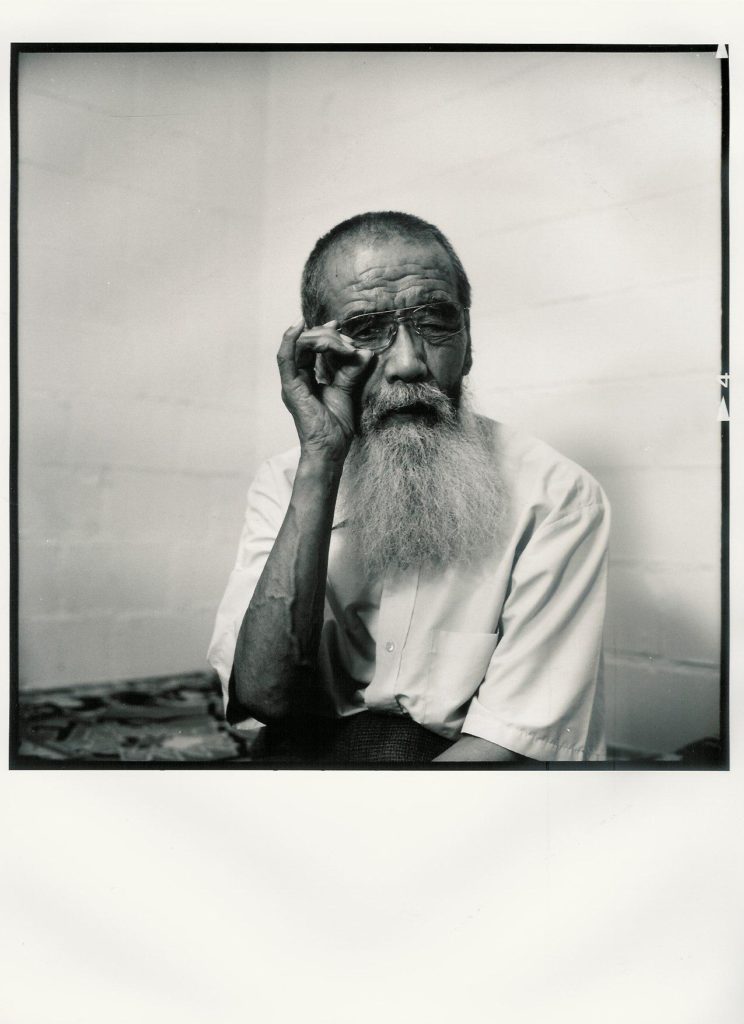
He maintained a strong connection to young Tibetans. Swiss-Tibetan activist Migmar Dhakyel, who used to visit him at Rikon monastery, said: “Once I recorded a short video statement and I took a picture of him telling him that many Tibetans and Tibet supporters are asking me how he’s doing. He was surprised and asked: ‘Really? They ask about me?’ Smiling with his warm eyes. I will always remember his warm smile. There is this myth around Tibetan political prisoners being ‘compassionate’ and ‘forgiving’ and ‘Oh, they were not angry with their torturers, they felt compassion towards them’. I never believe in such myths because Tibetans are normal human beings with normal human feelings. The thing about Jigsang la is truly that his beliefs and his integrity as a human being, as a Tibetan came from such a depth within himself that even 37 years of torture could not destroy his warmth and his humanity. You could see this when he smiled at you. His smile was pure, almost child-like and overall to me it symbolizes human triumph over brutality.”
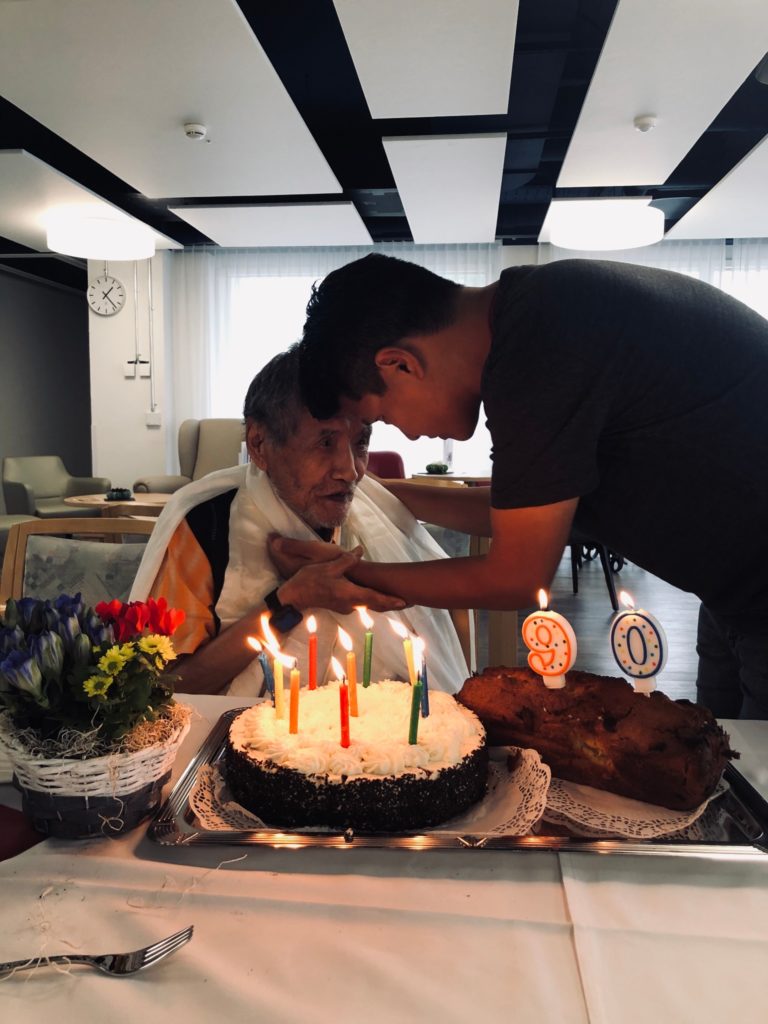
Tenzin Sewo, a Swiss-Tibetan who cared for Jigme Sangpo throughout his life in Switzerland, said that on his last birthday, he had very much enjoyed a slice of lemon drizzle cake. “It was my privilege and honour to serve him during his time in freedom in Switzerland,” Tenzin Sewo said. “I knew him as someone with a warm heart, strong conviction, and eyes that sometimes revealed a deep sadness.”
In pursuit of justice, Jigme Sangpo was happy to testify to the Spanish Criminal Court in the landmark cases of universal jurisdiction initiated by Jose Elias Esteve and Alan Cantos. On June 28, 2005, he and Palden Gyatso handed over to the Courts Register the main document and boxes of bulky evidence for the first ever criminal lawsuit for genocide and four other international crimes in Tibet, against the Chinese government.[3]
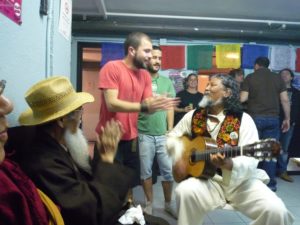
After giving evidence at the Spanish court, Jigme Sangpo made a surprise appearance at a free Tibet gig at a nightclub in Barcelona featuring some of Spain’s top stars. He shuffled slowly onstage in his trademark hat and glasses at a tilt and gave a radiant smile. With his hands clasped together in prayer, he thanked the audience for their support as they roared and whooped. Backstage, Loten Namling sang to him, “The answer my friend, is blowing in the wind.”
Reflecting his long ago role as a school teacher, at a time when the concept of free schooling and the importance of secular education was new in Tibet, Jigme Sangpo’s memoir concludes with a poignant message to the younger Tibetan generation. In his essay, he stresses the importance of education, saying that: “They say that a person without education is the same as one without a soul”, and urging them to learn their own spoken and written language as a priority. Notably, he also expresses his pride in the younger generation in Tibet, praising their “matchless courage” in “innovating new methods of non-violent struggle, [and] manifesting the power of truth.”
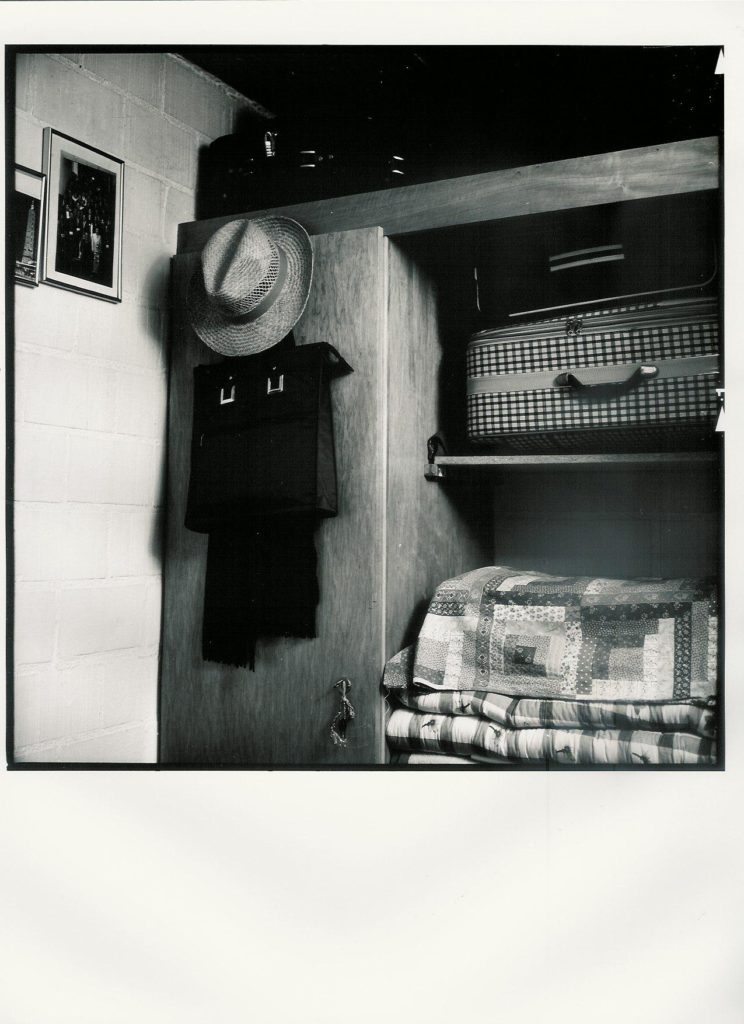
Kate Saunders is a writer, journalist and Tibet specialist who was until recently working for the International Campaign for Tibet as Research Director. She is the author of ’18 Layers of Hell: Stories from the Chinese Gulag’ and numerous reports for publications including the Washington Post, Guardian and The Times.
[1] A report by the now closed organisation Tibet Information Network in 2002 detailed conditions in the block as follows: “Detention Area Nine, which appears to have become operational in late summer 2000, has a total of 24 cells. One is used as a storeroom, two are for solitary confinement, and 21 are two-person cells. The two-person cells measure roughly three by three metres. Approximately 30 prisoners are reportedly held in Detention Area Nine at any one time. While some are new arrivals to the prison, the majority, including criminal prisoners, are reportedly undergoing the strict regime in Detention Area Nine as punishment. Prisoners in Detention Area Nine are reportedly not allowed to do any work. A tiny walled courtyard adjoins each cell in the block. Prisoners under the most severely restricted regime are not given access to that space or allowed any activity or exercise outside their cells. Other prisoners are allowed access to Detention Area Nine’s main courtyard that can be used for exercising or jogging. All cells are poorly ventilated; a hole was knocked into the wall of Takna Jigme Sangpo’s cell as a concession to his age and poor health and to ease the suffering caused by his respiratory problems. The inner door is left unlocked in some cells, but not others, preventing some prisoners from being able to access the light switch and darken their cells at night.” (Tibet Information Network, August 29, 2002, available via International Campaign for Tibet at: https://www.savetibet.org/chinese-authorities-build-new-punishment-block-at-drapchi-prison/
[2] Dui Hua Digest, January 2017: ‘To Lhasa for Jigme Sangpo’, http://duihua.org/wp/?p=11389 In April, 2002, Ambassador Clark Randt, the then U.S. Ambassador to China, had specifically requested a meeting with Jigme Sangpo after he was released on medical parole, which was not granted; the Ambassador pressed for another representative to meet with him. See International Campaign for Tibet news release, April 17, 2002, https://www.savetibet.org/update-on-takna-jigme-Sangpo/ Although Ambassador Randt did not meet with Jigme Sangpo during his visit, an embassy spokesman said, “The ambassador has requested that he or other appropriate United States government officials or persons be allowed to see Mr. Sangpo at the earliest, appropriate time.”
[3] Alan Cantos wrote: “Secondly, in 2009 he came to Madrid to testify in both lawsuits in the Spanish High Court (Audiencia Nacional): for the case of genocide (2006) under Judge Ismael Moreno and for the case of crimes against humanity under Judge Santiago Pedraz (admitted by the court in 2008, 3 days before the Beijing Olympics). Like Palden Gyatso and Bagdro he was the strongest believer in the power of truth and justice for Tibet past and future. He helped us defend, amongst skeptical ‘injis’ and Tibetans alike, the importance of International Law and Universal Jurisdiction by actively participating in the genocide lawsuit and the second case in the Spanish Courts. He helped many Tibetans understand the difference between justice exercised by competent national and international Courts with revenge and harming those who harmed you. My sadness is deep but greater is the force, encouragement and determination that he planted in José and me.”


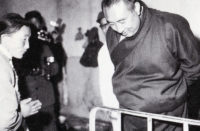
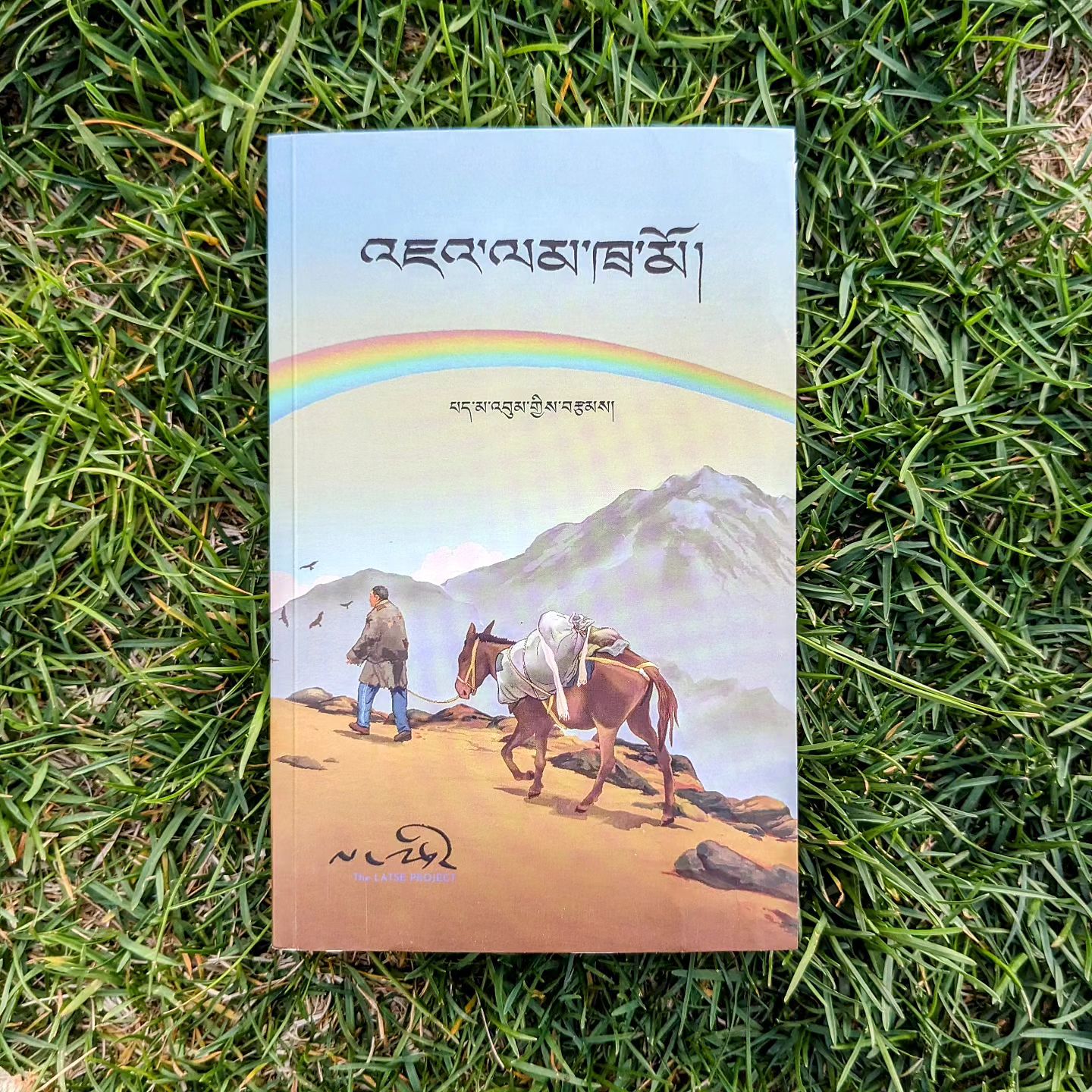
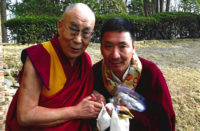
Follow Us!